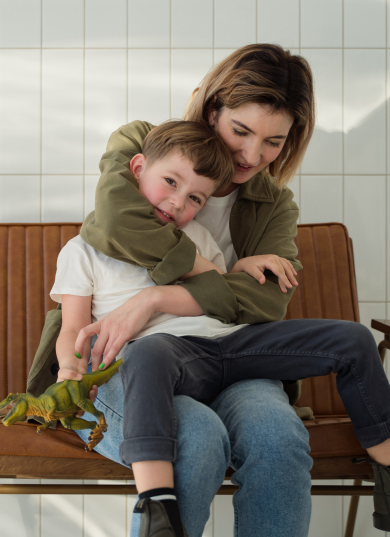COVID-19 continues to impact our lives, and although the government says child care services should remain open unless otherwise directed, with risk-reducing measures in place, sometimes doors have to close for the good of everyone’s health.
A service might temporarily close in response to a COVID-19 case, or because of wider restrictions announced by a state or territory government to quell a local outbreak. Whatever the reason, a child care closure puts pressure on working families and centre operators, but there is some good news.
The Federal government has extended the gap fee waiver provision for child care services nationwide, and this means that if your service has to close due to COVID-19, it can waive gap fees until 30 June 2022.
This takes some of the worry out of a child care closure, so let’s see what it means for families, and how you can stay up-to-date with current COVID-19 restrictions and closures.
How does the gap fee waiver work?
If your family is eligible for the Child Care Subsidy (CCS), then the government pays this money straight to your child care provider to reduce the fees you personally have to pay.
The outstanding amount is called the ‘gap fee’ or ‘out-of-pocket fee’, and although you’re usually obliged to pay this co-contribution fee under Family Assistance Law if you receive the CCS, the COVID-19 gap fee waiver provision means your service can decide to give you fee relief if your child cannot attend care because:
- Your service, or a room within the service, is closed due to COVID-19 on advice from the state or territory government. This includes situations where:
- Your Family Day Care or In Home Care educator can’t provide their usual service because they, or a member of their immediate household, is isolating or quarantining, or
- Your Outside School Hours Care service operating on a school campus has to close because the school is directed to close.
- Your service can also waive gap fees if your state or territory restricts access to child care in your region because of COVID-19.
- A gap fee waiver is also possible if your child, or a member of their immediate household, must isolate because of COVID-19.
The government’s current COVID-19 support measures for child care were scheduled to end in 2021, but in light of COVID’s continuing impact on our lives, the government has extended support until midway through 2022.
You can read the detail here and it’s important to note that the support includes an increase to the allowable absence days your child can access if they’re away from care.
Instead of receiving up to 42 allowable absence days per child, per financial year, all Australian families can access an extra 10 allowable absence days for the 2021/2022 financial year. This brings each child’s allowable absences up to 52 days, and these days can be used for any reason.
These extra days are applied automatically and they’re on top of any additional allowable absences your child may have received (e.g. due to a lengthy lockdown in NSW, Victoria or the ACT in 2021).
The government explains that if a state or territory restricts access to child care in a region for more than seven days, more absences will be given.
What other COVID-related child care assistance may be available?
The Federal government has had to be agile in supporting Australians through the pandemic and it recognises that, ‘Sometimes, [local COVID-19] restrictions may affect a child care service’s ability to remain open, or a family’s ability to attend.’
It says, ‘At such times, we will monitor the situation and work with local governments and key peak organisations from the sector to consider whether measures of support are needed.’
In the meantime, some CCS families will be eligible for the Temporary Financial Hardship Subsidy if COVID-19 has badly impacted their finances in the last six months and ‘substantially reduced [their] ability to pay child care fees.’
It’s also worth checking the other COVID-related payments and support available to Australians here, such as the Pandemic Leave Disaster Payment or COVID-19 Disaster Payment.
Where can you find current information about COVID-19 restrictions and child care centre closures?
In this pandemic, we’ve seen how circumstances can change by the moment, and the best way to stay up-to-date with restrictions and closures in your area is to keep an eye on your state or territory COVID-19 information website:
- New South Wales (click here for child care info)
- Victoria (click here for child care info)
- Queensland (click here for child care info)
- Western Australia
- South Australia
- Tasmania
- Australian Capital Territory
- Northern Territory
You’re encouraged to contact your child care centre operator directly if you need advice and information about the effect of local restrictions on your service.
And because closures can happen suddenly, it’s important to plan for this possibility ahead of time (e.g. by considering how you’ll balance work and child care at home).
The Australian government makes it easy to track current restrictions, with its COVID-19 Restriction Checker (just search for ‘Education and Childcare,’ then click on your state or territory).
The Australian Children’s Education & Care Quality Authority (ACECQA) also provides a mapping tool showing the open/closed status of approved early childhood education and care services around the country.
This is very useful because it covers closures caused by health emergencies (including the pandemic) and also by localised issues, bushfires, floods and cyclones.
If your child can’t attend their service because of a COVID-19 outbreak and subsequent lockdown, Starting Blocks has some resources to help you:
There are also resources to support your wellbeing as you parent through a pandemic; and although we can’t necessarily control how COVID will affect our lives, the gap fee waiver does give us one less thing to worry about in the case of a child care centre closure.
References
Department of Education, Skills and Employment: COVID-19 and child care fees
Further reading


































